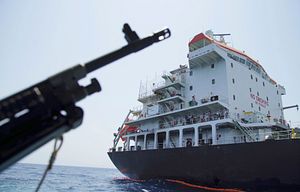The steady escalation of tensions between the United States and Iran, most recently brought to a head by attacks on two tankers on June 12, which the United States says Iran was responsible for, have not had a large impact on the oil market. A short-term price rally of 2.2 percent based on rising supply risks evaporated as weakening economic figures overshadowed other concerns for traders, investors, and consumers. Asia – the world driver of oil demand growth – was already watching closely as Washington moved to squeeze out Iranian oil exports in late April. With the odds of a military confrontation rising, the import-dependent economies of the Asia-Pacific need to prepare for rising supply risks in the Strait of Hormuz.
The most recent tanker attacks – one of which targeted a Japanese ship – coincided with Japanese Prime Minister Shinzo Abe’s attempt to tamp down tensions by visiting Tehran directly and encouraging Iranian President Hassan Rouhani to publicly signal Iran’s continued commitment to the Joint Comprehensive Plan of Action (JCPOA). The attacks swiftly ruined any progress made, and exposed U.S. allies and partners to the reality that no other state can adequately mediate. U.S. President Donald Trump has ordered another 1,000 troops deployed to the Middle East to counter Iran. Adding more fuel to the fire, UN officials have since leaked that the United States is planning a “tactical strike” on an Iranian nuclear facility if needed, and Republican senators are aligned in their support of military action as a response to further provocation. What constitutes such a provocation is the open question that markets and Asian importers want the answer to.
Four of the world’s five largest oil importers are in Asia: World-leader China, India, Japan, and South Korea. The Asia-Pacific has driven global oil demand growth for the last two decades, and any fluctuation in oil needs from leading markets like China and India has an outsized impact on demand expectations. Chinese imports peaked at 10.64 million bpd in April as firms moved to stockpile supplies. Japan, South Korea, and India all rushed to do the same with Iranian crude, upping their intake in advance of the full force of sanctions.
Despite the short-term bump, market sentiment is turning bearish. The International Energy Agency has revised its annual demand growth projection to 1.2 million bpd, down from an expected 1.6 million bpd projection. OPEC’s demand growth projections are down to 1.12 million bpd, with further room to fall. Demand growth led by the Asia-Pacific’s exporting economies is sputtering closer to zero for the rest of the year.

































